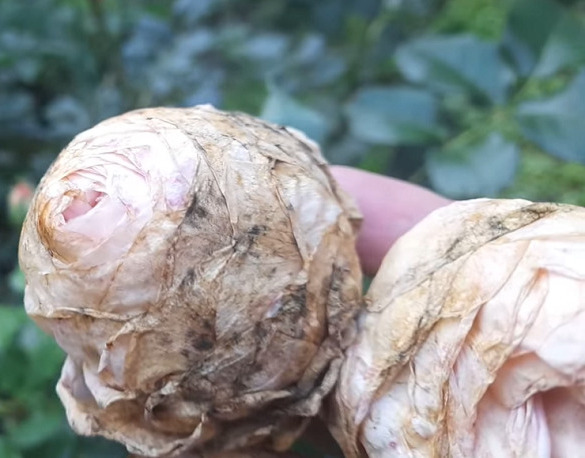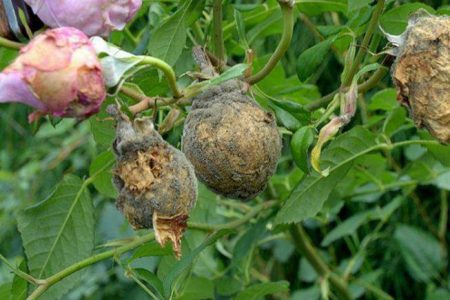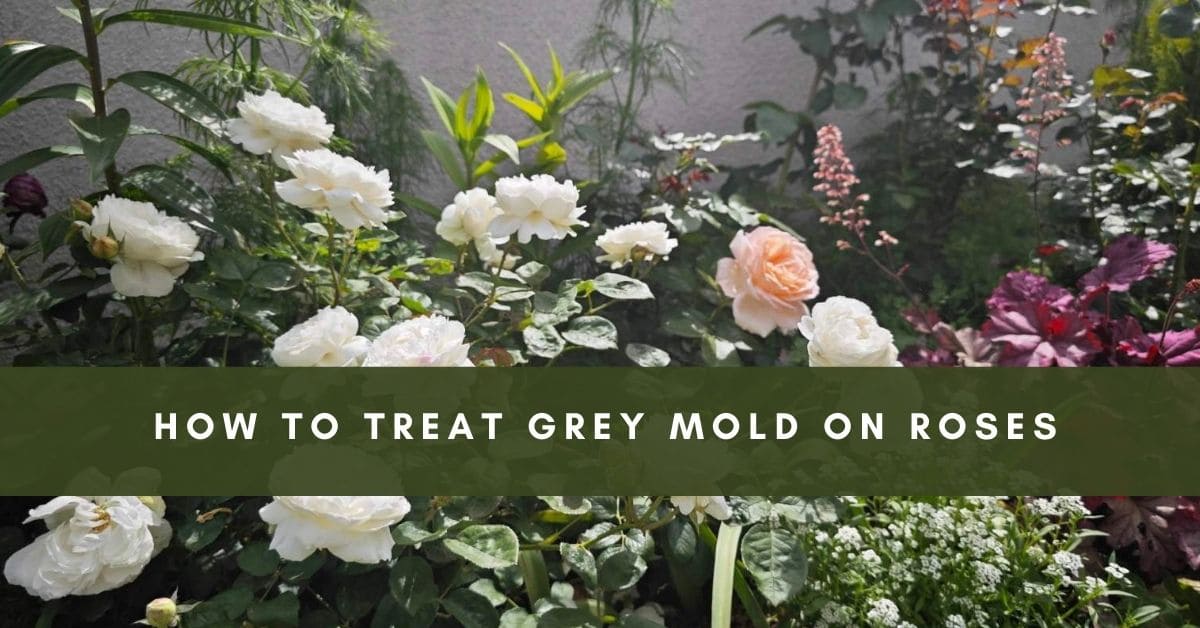Roses are cherished for their stunning beauty and sweet fragrance but can fall victim to several diseases. Among the most harmful is grey mold, or botrytis blight, a fungal infection that can severely damage your roses, particularly in damp and humid weather. In this article, we’ll explain grey mold and how it affects roses and provide step-by-step methods to control and prevent it.
What is Grey Mold (Botrytis cinerea)?
Grey mold, caused by the fungus Botrytis cinerea, is a common plant disease that targets weakened or dead plant tissue. It affects many plants, including roses, particularly those in the Floribunda and Hybrid Tea groups. The disease spreads rapidly in environments with high humidity, especially during the spring and fall.
How Grey Mold Affects Roses
Botrytis cinerea is an opportunistic pathogen that invades plants through wounds, weakened tissues, or dead flowers. Once inside, it spreads quickly, producing a fuzzy greyish mold on infected parts of the plant, including:
- Petals
- Leaves
- Stems
- Buds
Without intervention, the fungus can cause severe damage, rotting buds, and flowers before blooming, withering leaves, and decaying stems.
Recognizing Symptoms of Grey Mold on Roses
Detecting Botrytis early is critical to controlling the spread of the disease. Here are the common symptoms to watch out for:
Early Signs
- Yellow or brown spots on petals that quickly expand.
- Wilted or soggy-looking flowers, especially during wet conditions.
Advanced Symptoms
- Grey fuzzy mold visible on infected areas.
- Rotting buds that fail to open.
- Stem lesions and weakened branches.
- Flower drop before blooms have fully matured.

Conditions That Promote Grey Mold
Understanding what encourages Botrytis can help you prevent its development. The following conditions make roses more susceptible:
- High humidity (above 85%) and poor air circulation.
- Cool temperatures between 15-20°C (59-68°F).
- Crowded planting leads to poor airflow.
- Overhead watering, which keeps the foliage wet.
- Damaged or decaying plant tissue provides entry points for the fungus.
Addressing these environmental factors can minimize the chances of Botrytis affecting your roses.
How to Treat Grey Mold on Roses
Once grey mold has taken hold, immediate action is essential to save your plants. Here’s how you can treat it:
Step 1: Remove Affected Parts
Gently trim and remove any diseased leaves, stems, and flowers. Always ensure your pruning shears are sterilized to stop the fungus from spreading. Please dispose of the pruned parts by burning them or throwing them in the trash (avoid composting).
Step 2: Improve Air Circulation
If your roses are densely planted, thin them out by trimming branches to improve airflow. Proper spacing between plants reduces humidity around the rose bush, making it harder for the fungus to thrive.
Step 3: Apply Fungicide
Use a fungicide specifically designed to treat grey mold, such as those containing chlorothalonil or copper-based solutions. Apply the fungicide following the manufacturer’s instructions, ensuring thorough coverage of the affected plant.
Step 4: Adjust Watering Practices
Switch to drip irrigation or water the base of the plants early in the day. Avoid wetting the leaves and flowers to reduce the chances of fungal growth.
How to Prevent Grey Mold on Roses

Prevention is always better than cure, and there are several strategies you can adopt to keep grey mold at bay.
1. Ensure Proper Spacing
Plant roses with ample space between each bush. This allows air to flow freely through the plants, reducing moisture buildup that can encourage fungal growth.
2. Regular Pruning
Regularly prune your roses to remove dead or decaying tissue. Deadheading old flowers and removing fallen petals from the ground will also help reduce the sources of infection.
3. Manage Humidity
In areas with naturally high humidity, consider adding mulch around the base of your roses to help absorb excess moisture from the soil. Additionally, ensure the rose bed is in a sunny, well-ventilated area.
4. Use Disease-Resistant Varieties
If grey mold has been a recurrent issue, consider planting disease-resistant rose varieties. Some rose species have been bred to withstand fungal infections better than others.

Get Your Free Lunar Gardener's Calendar 2024!
Join the Lunar Gardening Revolution! Subscribe now to receive our exclusive Free Lunar Gardener’s Calendar for 2024. Harness the power of the moon to optimize your planting, nurturing, and harvesting.
Natural Methods to Combat Grey Mold
For gardeners who prefer organic or eco-friendly methods, there are a few natural options that can help in controlling grey mold:
Organic Sprays
- Neem Oil: This natural fungicide can slow the spread of grey mold when applied regularly.
- Baking Soda Solution: A mixture of water, baking soda, and dish soap can be sprayed on the affected areas to create an inhospitable environment for the fungus.
Biological Control
Consider introducing Gliocladium roseum, a hyperparasitic fungus that targets grey mold. This biological agent can help reduce the population of Botrytis cinerea in the soil and on the plant itself.
If left unchecked, grey mold can cause significant harm to roses, but it can be controlled with prompt attention and proper care. Spotting the symptoms early, improving the growing environment, and applying the appropriate treatments will help keep your roses solid and flourishing. Preventive measures such as proper spacing, regular pruning, and organic fungicides will protect your beloved plants from this pesky fungus.
Keep your garden vibrant and your roses flourishing by staying vigilant against grey mold!

The Organic Rose Revolution: Grow Stunning Blooms, Naturally
- Unlock the secrets of nurturing your roses organically with our guidance on soil health, natural fertilizers, and sustainable pest control methods. Your garden will thrive with eco-friendly care that respects nature’s balance.
- Empower yourself with the knowledge to craft natural remedies for common rose ailments.
- Banish pests from your garden precisely using proven strategies that safeguard your roses without harsh chemicals. Keep aphids, mites, and other invaders at bay while preserving your garden’s natural harmony.
- Explore a world of breathtaking rose varieties carefully curated to captivate your senses and elevate your garden to new heights of beauty.

